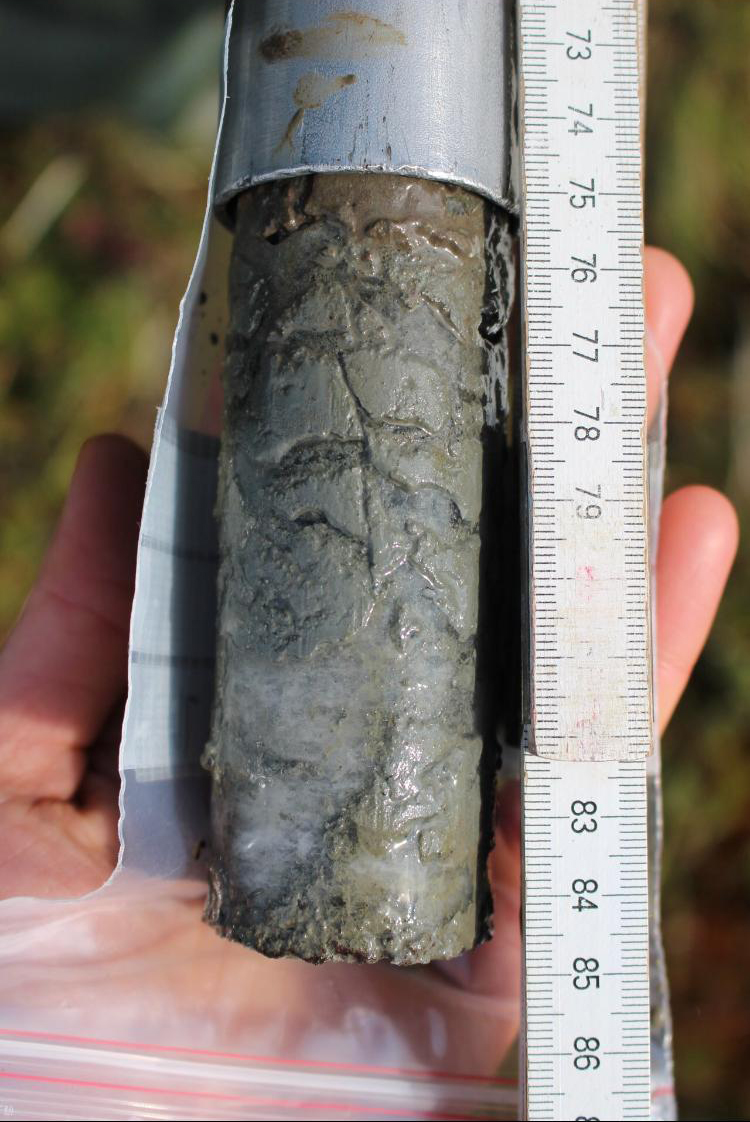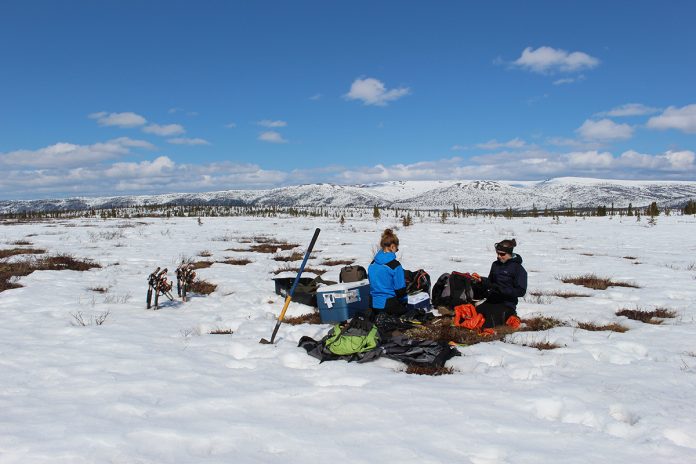Considering carbon as a lone entity during permafrost thaw is likely to lead to over-confident projections of permafrost carbon emissions, highlights Sophie Opfergelt, Earth and Life Institute, UCLouvain, Belgium
Precise estimates of permafrost carbon emissions are needed to better predict the rate of climate change and the remaining carbon budget.
Decision-makers should be advised by the most precise scientific knowledge to make informed decisions. Permafrost carbon emissions were not included in the models analysed by the Intergovernmental Panel on Climate Change (IPCC) in the last assessment report in 2013. These emissions reduce the remaining carbon budget to keep within the 1.5 or 2°C targets from the Paris Agreement on climate action. The recent Special Report of the IPCC on the Ocean and Cryosphere in a Changing Climate provides an estimate of the permafrost organic carbon stocks, and an evaluation of how this carbon pool would change following contrasting Representative Concentration Pathway (RCP) scenarios. This is a step forward, but efforts are still required to provide precise estimates of permafrost carbon emissions – a key parameter in the prediction of the rate of climate change and the Earth’s remaining carbon budget.
Carbon as a lone entity during permafrost thaw
The precision of permafrost carbon emission estimates depends on how well the various processes affecting the fate of organic carbon upon permafrost thaw are constrained.
One unaccounted for factor is that organic carbon in permafrost is not alone, but partly interacts with mineral constituents. With permafrost thaw, these interactions evolve along different pathways which largely depend on soil water saturation: some soils face a rise in their water table leading to wetlands, while other areas are drained resulting in drier soils. Therefore, permafrost thaw directly affects the stability of these interactions, a factor which may slow down or amplify permafrost carbon emissions. Not considering the evolution of the interactions between minerals and organic carbon upon thaw is likely to lead to over-confident projections of permafrost carbon emissions.
This is precisely why Sophie Opfergelt and her team of four scientists (Catherine Hirst, Elisabeth Mauclet, Arthur Monhonval and Maxime Thomas) are leading the project WeThaw funded by the European Research Council focusing on the role of mineral constituents on the modulation of permafrost carbon emissions.
The positive or negative influence of mineral constituents
The evolution of the interactions between organic carbon and minerals with permafrost thaw plays a key role in modulating (i) how much carbon will be available for greenhouse gases production, i.e., amplifying or mitigating permafrost carbon emissions, and (ii) how much carbon will be emitted as carbon dioxide or as methane, and hence the resulting net global warming potential.
The WeThaw team is carrying out fieldwork in Alaska and gathering samples from Siberia, Canada and Greenland collected by collaborators to perform laboratory analyses with the aim of characterising changes in mineral constituents upon thaw and the implications for the fate of organic carbon. The overarching goal of WeThaw is to scientifically underpin the role of mineral constituents on the fate of organic carbon in thawing permafrost.
Team members are focussing their efforts on studying the evolution of mineral-organic carbon interactions (i) during transfer between soils and rivers, (ii) due to the soil to plant transfer, (iii) induced by an abrupt thaw, and (iv) recorded in geological archives.
This level of understanding is required to provide an integrated view of the evolution of interactions between organic carbon and minerals in a changing permafrost ecosystem, a necessary step to improve the next generation of decision tools based on permafrost carbon emissions.
32°C, the highest temperature on record in Alaska, was measured in July 2019. These extreme temperatures accelerate permafrost thaw with direct implications for the global climate and the carbon budget.
Permafrost?
About one-quarter of the exposed land surface in the Northern Hemisphere is underlain by perennially frozen ground, the permafrost, with a temperature below 0°C for two consecutive years or more. The pan-Arctic permafrost region includes large parts of Alaska, Canada, Greenland, Northern Europe (Scandinavia) and Russia.

Thawing or melting?
The Earth’s high latitude regions are warming twice as fast as the global average. As a consequence, ice melts and permafrost thaws. Increasing permafrost temperatures have been recorded with consequences for the environment and infrastructure, including coastal erosion, ground subsidence, road and building collapse. With climate change, the permafrost extent is predicted to shrink by at least one-third by the end of this century.
Permafrost thaw: A tipping element in the climate system
Permafrost contains three times as much carbon as exists in the world’s forests. With permafrost thaw, previously frozen organic carbon is exposed to microbial decomposition with subsequent emission of the greenhouse gases carbon dioxide and methane into the atmosphere, creating positive feedback on global warming, i.e., the permafrost carbon feedback. It is estimated that about 15% of the permafrost organic carbon stock could be emitted as greenhouse gases by 2100. On an annual basis, this represents 22 to 31% of the current anthropogenic carbon emissions. Most of that carbon would be emitted as carbon dioxide, but about 2.3% of the permafrost carbon emissions will be released as methane, known for its larger global warming potential on a century time scale.
You can visit the webpage of the WeThaw project, here.
Complementary information: Opfergelt S. The next generation of climate model should account for the evolution of mineral-organic interactions with permafrost thaw. Environ. Res. Lett., 2020, 15: 091003, doi.org/10.1088/1748-9326/ab9a6d.
The WeThaw project is an ERC Starting grant funded under the European Union’s Horizon 2020 research and innovation programme (WeThaw, grant agreement 714617).
Please note: This is a commercial profile











